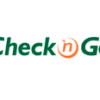Read the latest payday loan statistics.
Payday Loan Statistics
Payday loans are short-term, high-interest loans designed for people in a crunch who need cash fast and have bad credit. Many people use them to cover unexpected expenses, like overdraft fees or car repairs.
While these loans can give you fast cash, they have steep interest rates and fees. For example, if you borrow $100, you may have to pay back more when it’s due. Additionally, some people find it hard to pay off their loans on time which can trap them in a cycle of debt. CreditPug has compiled the latest payday loans statistics.
Payday Loan Statistics
It’s easy to see why some people may be alarmed when looking at the statistics attached to payday loans. For example, in the United States, in states that offer fewer consumer protections, these loans can cost up to four times more than in states with more robust protection. Also, even though the average payday loan cycle is two weeks, studies show that one in five borrowers default. A few more eye-opening payday loan statistics include:
- The Consumer Financial Protection Bureau found that roughly 80% of payday loan borrowers took out a second loan or rolled the first one into another within 30 days.
- Approximately 12 million Americans take out a payday loan every year. The same study found that you pay an average of $520 in fees for every $375 borrowed.
- As of 2023, you can get payday loans in 22 states, and 18 states have banned them.
- Four states (Virginia, Ohio, Colorado, and Hawaii) passed reforms to protect consumers from predatory payday loan practices.
- Each year, payday loan customers pay roughly $9 billion in fees.
- For a two-week loan, the APR is almost 400%. So, if you took out a loan of $300, you’d pay $345 back.
- On average, a borrower will take out eight $375 loans yearly and pay $520 in interest.
What are payday loans and who’s using them?
As the name suggests, payday loans are short-term loans you pay when you get your next paycheck. They’re usually smaller amounts of cash with a big interest rate, based on the check the lender holds for future deposits or via electronic access to your bank.
To use them, either apply at a physical location or an online payday loan, provide proof of income like a check stub or bank statement, and write a postdated check for the loan amount, accounting for fees and interest. The lender gives you the money, and you can use it immediately. When the due date arrives, you can repay the entire loan or let the lender cash your postdated check.
People who live paycheck to paycheck are among the big demographics using payday loans. Additionally, people with no college degree, renters, divorcees or couples who separated, African Americans, and people who earn less than $40,000 a year are targeted demographics. Many of these people don’t have access to personal bank loans or credit cards when the following occur:
- Emergencies – Emergency expenses are one of the main reasons people use payday loans. This can include car repairs, medical bills, or home maintenance costs.
- Lack of Options – Some people don’t have savings, credit cards, or other financial cushions to land on when needed.
- Convenience – Payday loans are often more accessible than traditional banks, especially outside regular business hours.
- Avoiding Overdrafts – Some people may choose a payday loan to avoid overdraft fees from their banks.
- Simple Qualifications – If you have no credit history or bad credit, payday loans look attractive because you may not qualify for a traditional loan.
The prevalence of payday loans
Payday loans, often touted as a “quick cash” solution, have gained massive popularity in the United States. They can help you overcome a financial hurdle, but you’ll pay high-interest rates.
Data insights from the Federal Reserve and CFPB
According to data from the CFPB, millions of Americans take out payday loans every year. Annually, these loans add up to billions. Additionally, the Federal Reserve’s report detailing the economic well-being of households throughout the United States found that almost 40% of adults wouldn’t be able to or would struggle to cover an unexpected $400 expense. This makes high-interest, short-term loans an attractive option.
It’s also important to note that the regulation and usage of payday loans vary from state to state. For example:
- Texas has the highest payday loan interest rate at 664%, closely followed by Idaho with 652% and Missouri at 527%
- Currently, 18 states cap payday loan interest rates at 36%
Trends and the future in a high-interest rate environment:
Historically speaking, demand for payday loans keeps growing, mainly when higher unemployment rates or during economic downturns occur. After the 2008 financial crisis, there was a spike in the United States payday loan usage. This was due to the higher unemployment rates and people facing lower incomes.
Due to the current high-interest-rate environment, credit and traditional loans get more expensive, and this may push financially vulnerable people towards payday loans because they’re more accessible but expensive. Conventional bank loans may be less appealing to this demographic due to high-interest rates, but this can also make payday loans more expensive. In fact, by 2020, it’s estimated that the payday loan market will reach $6.8 billion annually.
The impact of payday loans
While payday loans can be short-term financial solutions, they can negatively impact a borrower’s financial health in a lasting way. Let’s break down the impact of these loans below.
Financial impact on borrowers
According to Pew Charitable Trusts, to borrow $375, the average person will pay $520 in fees. This is the average payday loan amount, highlighting the high costs and interest rates attached to these loans. The Center for Responsible Lending also shows that the average person who uses payday loans can only afford a payment that equals 5% of their income. However, these loans usually cost much more than that, making them a dangerously unaffordable trap for too many people.
The cycle of debt
Research shows that around 14% of all payday loan borrowers can repay their total loan balance from their monthly budgets. As a result, many people take out a second payday loan to pay for the first one, creating a cycle of debt. Also, instead of repaying the first loan, many borrowers choose to roll over or renew their loans, which adds more fees. This buries them further into debt and makes it harder to pay off.
The CFPB found that around one in every four payday loans get reborrowed up to nine times or more—additionally, 20% of people who take out payday loan sequences default.
Impact on credit scores and long-term financial health
You can drop your credit score if you default on a payday loan. Also, when you first take this loan out, it may not negatively impact your score. But it can be a red flag for future lenders and creditors who pull your credit report because it makes you look more highly risky. The cycle of debt with payday loans can keep you in debt for months or years. This makes saving for other financial goals, like investing, building an emergency fund, or buying assets like a home or car, very hard.
The payday loan industry
The payday loan industry makes up a significant portion of the financial sector, especially in terms of short-term lenders. These businesses give people a way to survive financial surprises, but the industry gets heavily scrutinized and criticized because of lending practices.
At the peak, there were more payday loan businesses nationwide than Starbucks and McDonald’s combined. Many payday lenders have brick-and-mortar businesses, and access to the internet brought in dozens of online lenders. This makes the exact numbers hard to define, but the country has an estimated thousands of payday loan outlets.
Annually, this industry brings in billions. The Center for Responsible Lending reported that payday loan lenders collected $4.1 billion annually in customer fees. This number comes from the high costs and interest rates attached to these loans because they commonly have APRs of 400% and higher.
FTC’s Enforcement Actions
The FTC (Federal Trade Commission) has an active role in regulating and taking legal action against payday lenders that use predatory or deceptive lending practices. A few of their enforcement actions include:
- False Disclosure – The FTC takes legal action against payday lenders who don’t clearly state their APRs or loan terms to help customers make informed decisions.
- Unauthorized Withdrawals – Online lenders who made unauthorized bank withdrawals had to pay FTC penalties due to the trust breaches and unexpected fees the borrowers incurred.
- Deceptive Collection – Any lender that uses illegal tactics to collect money, like threatening to arrest you, attracts FTC action because it violates the Fair Debt Collection Practices Act.
- Data Security – Lenders who don’t protect borrower information get held accountable due to the high risk of data breaches.
Alternatives to Payday Loans
Payday loans may seem like a good option if you’re in a bind, but the high fees and interest rates can lead to a debt trap. Fortunately, you have options, including:
Personal Loans
Personal loans are a popular alternative to payday loans if you meet the credit requirements. Their benefits and drawbacks include the following:
Benefits:
- Lower Interest Rates – Personal loans usually have much lower interest rates than payday loans, especially if you have a decent credit score.
- Fixed Payment Schedules – Most personal loans have a fixed payment schedule, allowing you to budget.
Drawbacks:
- Credit Check – When you apply for this loan, the lender will do a credit check. They can deny or assign you a higher interest rate for a poor score.
- Potential Fees – Some personal loans may have early repayment penalties or origination fees.
Credit Cards
Credit cards can be a short-term safety net for some people if you use them responsibly, but you should know the benefits and drawbacks:
Benefits:
- Immediate Fund Access – Credit cards give you immediate credit access, which is excellent in emergencies.
- Lower APR – Credit cards can have higher interest rates but are usually lower than payday loans.
Drawbacks:
- Minimum Payments Can Lead to Debt – If you only make the minimum payment, you can fall into a cycle of long-term debt and higher interest.
- Credit Score Impact – If you have a high utilization rate, this can negatively impact your credit.
Emergency Savings
Building an emergency fund can give you a great sense of financial security, but it comes with costs as well as benefits, including:
Benefits:
- No Interest – If you use your savings, you’re using your own money, so there is no interest to pay.
- Financial Security – An emergency fund gives you peace of mind and financial security during unexpected expenses.
Drawbacks:
- Requires Prior Saving – You must save money in advance to have an emergency fund.
- Depleted Savings – If you use your savings, you’ll have to build it back up for future expenses.
Wrapping up
Millions of Americans take out payday loans yearly, as shown by our payday loan statistics and data. The ongoing debate centers around the risk they pose versus their necessity, causing government agencies to make a case for tighter regulations.
Payday loans are a double-edged sword in America, a quick solution for some people and a long-term financial burden for many. As the debate wages, their place in the nation’s economic narrative remains intensely scrutinized.





